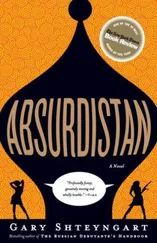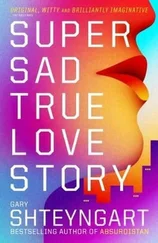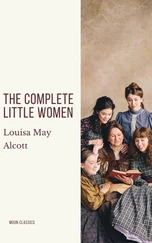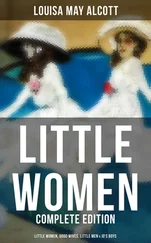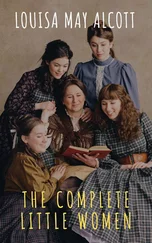All I can hear are the electronic zaps— tttrick— of the $39.99 Generra shirts being scanned at the counter, the green dollar figures adding up on the register, the final indignity, the New York sales tax, soaring the numbers into an unexpected new realm. I am so sorry, Mama, to spend our money like this .
At Solomon Schechter boys had to wear shirts with collars because that’s how Yahweh wanted it, but secular Stuyvesant has no dress code, and so we invest in a colorful collection of OP T-shirts. “OP” stands for “Ocean Pacific,” and it is a California surfers’ brand. I am, of course, the world’s most consummate Californian surfer. (“Dude, that breaker was boss! I am like so amped!”) Still, despite my lack of surfer credentials, these T-shirts are wonderful: They stretch out over the uncertainty of my teenage frame, and their bright visages of wave-riding surfers distract a little from the bobbing Adam’s apple above the neckline. One of the shirts features three grannies in polka-dot dresses next to a long-haired surfer carrying his boogie board, and I’m guessing this is some kind of easygoing California humor, but it is also a reminder that in the center of Queens, so far from the scary world of Manhattan, there still lives my grandmother, who is proud of me for getting into the prestigious math and science academy.
Wearing my OP grandmother shirt, I walk through parklike Stuyvesant Square, sweaty-palmed and scared. I know I cannot be Gary Gnu any longer, but then what will I be? A serious, hardworking Republican boy bound for Harvard, Yale, or, in the worst scenario, Princeton. That’s me. I’ll be funny only when it’s called for. No more clowning around . I’ll keep my mouth shut. I have just seen Oliver Stone’s Wall Street with my family, and the lessons were clear. Don’t trust outsiders. Don’t get caught. Focus only on wealth creation. Greed is good. I also think I have a trump card: the $280,000 colonial my family has just bought in Little Neck. Packed in my school bag, just in case, I carry an engineer’s report testifying to our new house’s value, including a photograph of the house in the morning sun, its southern exposure swaddled by a row of hyacinths. Every step of the process, from picking out the actual house among a casting call of colonial look-alikes to calculating the mortgage payments, was done with my obsessive participation. I even created a Commodore 64 computer program called Family Real Estate Transaction Calculator to help us make sense of our descent into institutional debt. I wonder what children whose parents have money think about in their spare time.
And the other thing I want to do is to make a friend. Jonathan has gone off to the Ramaz School, a Hebrew school on the Upper East Side, many of whose children enjoy the kind of prosperity that would make my old Solomon Schechter comrades blanch. The difference between Stuy and Ramaz is too severe, the memory of our common suffering still too recent, and our friendship quickly fades away. Now there is no one to play Zork or eat juicy kosher kebabs with, no daily phone calls, no car rides with a kind native-born father, and I realize, after having a real American friend, that friendship is almost as important to me as the acquisition of prime outer-borough real estate. Since I can’t use humor to advance myself at Stuyvesant, I must learn a different way to make people like me and spend time with me.
And so here I am standing in front of Stuyvesant High School in my Ocean Pacific granny T-shirt. The building is a muscular Beaux-Arts monster, five stories of brick academic excellence that scare the boy from Little Neck to no end. But my fellow first-year students look no better than I do. Most of the boys are my height, or maybe a little taller, thin, and pallid, smelling of something stale and ethnic, the world around them reflected in spectacles so thick they could generate solar energy. Our natural enemies are the truly urban kids from low-performing Washington Irving High School, a few blocks away, who will supposedly beat the shit out of us at will (in four years at Stuyvesant, I encounter exactly zero of them). A special “Safe Train” is arranged by the board of education at the First Avenue L stop. This subway train departs under full police protection to make sure our Einsteins are not attacked by ruffians as they connect to, say, the number 7 train to Flushing, Queens. Apparently, I’ve gone from a Judaic Benetton showroom to a holding pen for multinational nerds.
Which brings me to the next thing I notice.
About half of these kids are “Chinese.” I’ve been told to expect this interesting twist and to develop all kinds of formal strategies for relating to children of the Far East, because one day they might employ me. While it is an accepted fact that the black and Hispanic kids will be violent, the Chinese kids are supposed to be smart and polite, if maybe a little otherworldly, because their culture is just so different from normal culture. An important tidbit I pick up somewhere on the streets of Queens: You must never refer to these Chinese kids as “Chinese,” because some of them are actually Korean.
Inside, bedlam. The halls of the old Stuyvesant — the school presently occupies a deluxe mini-skyscraper in Battery Park City — were meant for a handful of boys at the turn of the previous century. By 1987, the school somehow crams in nearly three thousand geeks of both genders. Freshman orientation involves reams of printouts, sequences of precalculus and full-on calculus and postcalculus and meta-calculus, along with lethal doses of biology, physics, and chemistry. A thick white-and-blue handbook gives us the first taste of what we’re to expect in the next four years: the College Highest Average Rejected, Lowest Average Accepted Chart (CHARLAAC), *which we will soon know by heart. The numbers are numbing. Without at least a 91 percent average, even the lowliest Ivy League school is out of bounds.
At the end of the day, my mother and I have worked out a plan. Because Manhattan is so dangerous, Mama will hide behind a tree outside of the main entrance of Stuyvesant, and when I come out she will shadow me to the subway and, from there on, back to the safety of Little Neck. When I ran away from the Sauerkraut Arms on Cape Cod, I had managed this long subway journey by myself. But back then I had the two garbage bags full of books and clothes that made me look so destitute even potential muggers averted their eyes out of sympathy.
And so it is resolved: I need a subway companion. But our plan goes awry in the most awful way for Mama. Because by the end of the first day of Stuy with its great scholarly disquisitions on the different schools of Cornell (the School of Industrial and Labor Relations is a good option if you can’t get into Arts and Sciences and if you can convince the admissions people that you like labor), I have made something of a friend, and he is … black. With just a tiny dribble of finely cut hair on his head and an urban uniform of no-brand sweatpants and no-brand sweatshirt, black. And this new friend has asked me to go to the Central Park and play something called Ultimate Frisbee with him and some other Stuyvesant kids, black.
A terrible choice is upon me. Do I betray Mama, who is hiding behind a tree, anxiously scanning the horizon for me as waves of Chinese kids run past her to the Safe Train? Or do I go with this black to the Central Park? I choose friend making. And it hurts me so much, because my mother has just bought all these nice clothes for me and our shopping has made us close. Mama is a friend, my best confidante now that Jonathan has gone to Ramaz, and she is waiting for me under the tree. Just three years ago at Ann Mason’s Bungalow Colony I had taken her aside and informed her of the most important development of my life to date: “Mama, we played Spin the Bottle and Natasha had to kiss me.”
Читать дальше





